
Lot 26
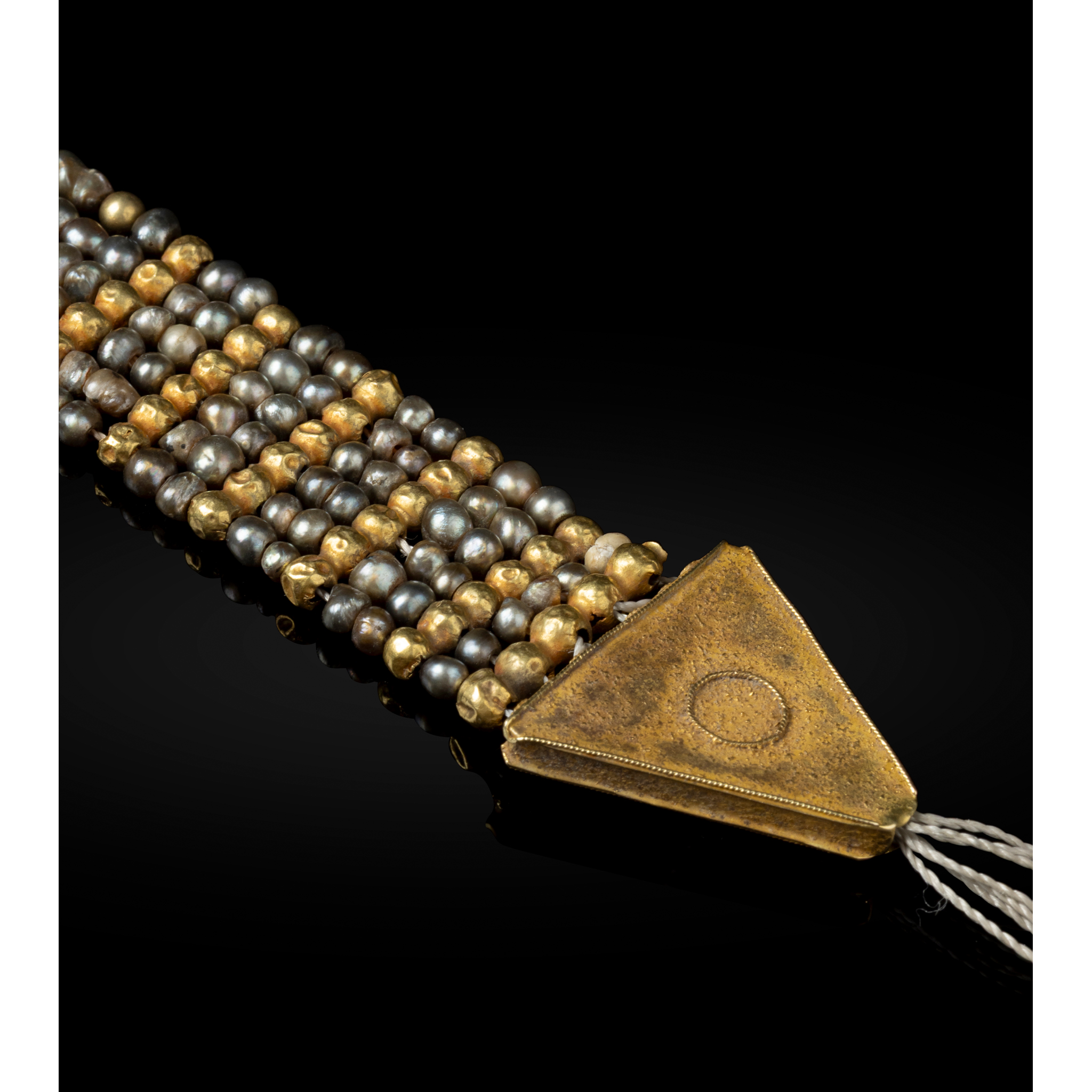
A SELJUK COMPOSITE NECKLACE WITH NATURAL PEARLS
CENTRAL ASIA, 11TH/ 12TH CENTURY
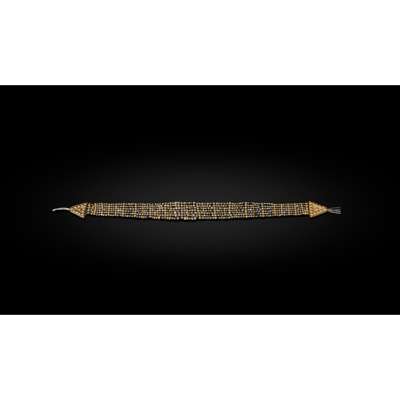
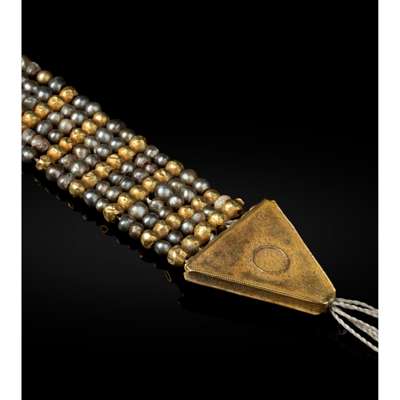

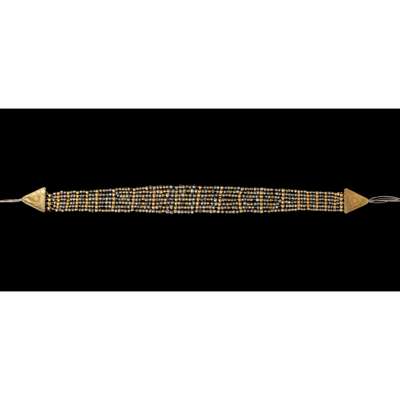
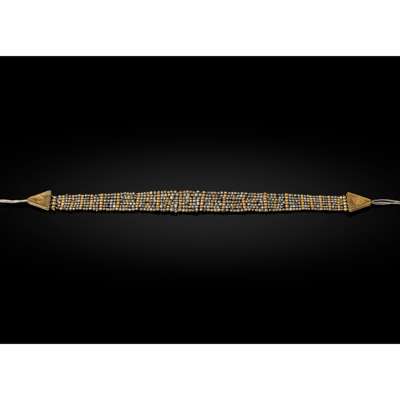
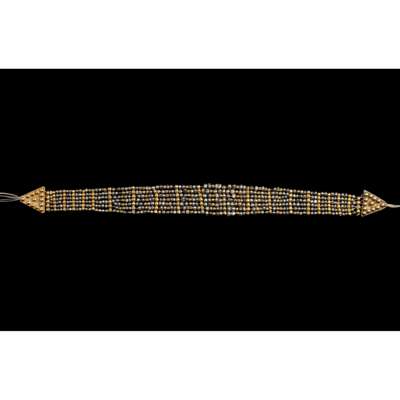


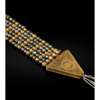
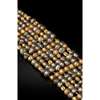

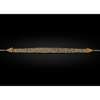


Auction: 10 December 2025 from 14:00 GMT
Description
each finial gold element of triangular form with beaded borders and raised circle at centre, strung with seven long rows of spherical and flanged gold beads and natural pearls, later restringing
Dimensions
35cm long
Provenance
Formerly, from a UK collection formed in the 1960s.
Footnote
Elegant and simple, this necklace is a very rare surviving piece of Seljuk-era pearl jewellery. Such necklaces were apparently only worn by women. Although little of the jewellery survives, literary sources show that pearl jewellery was esteemed under the Seljuks and their successor states. The Shahnameh of Firdausi, composed in the early 11th century, describes Sindukht arraying herself “all in brocade of gold with pearls and jewels” before meeting Sam. In the Varqa u Gulshah manuscript copied in early 13th century Konya, Gulshah is shown wearing a double-stranded necklace of gold beads and pearls. Pearl jewellery was therefore clearly worn across the early medieval Persianate world (S. R. Canby et al, Court and Cosmos: The Great Age of the Seljuqs, The Metropolitan Museum of Art, 2016, pp. 99-100). With an empire which extended across the Straits of Hormuz and into modern Oman, the Seljuks would have had easy access to fine pearls. For gold belts set with pearls, see Bonhams, Islamic and Indian Art, 14 November 2023, lot 16, and Christie’s, Art of the Islamic and Indian Worlds, 6 October 2011, lot 75.













